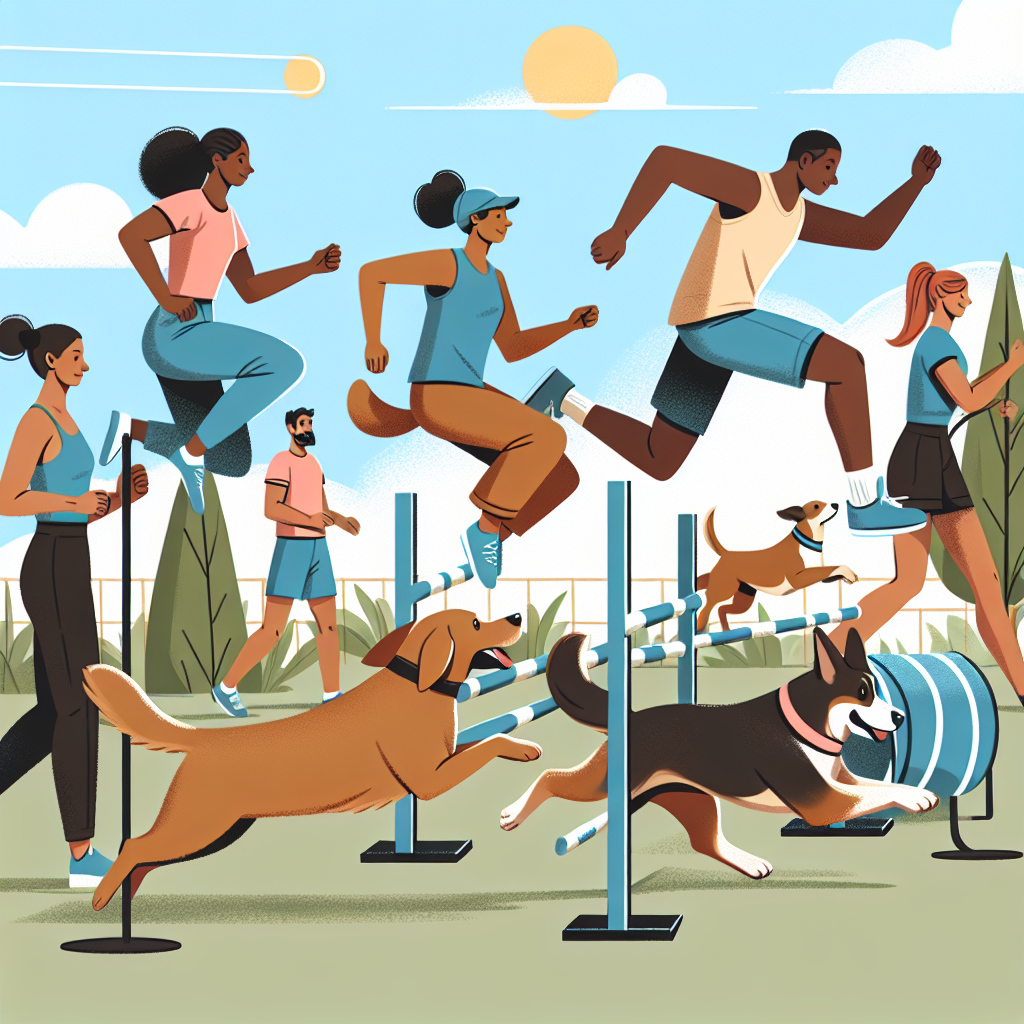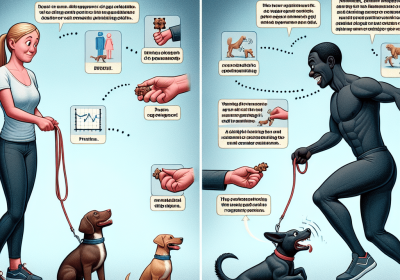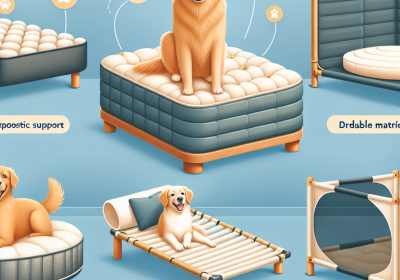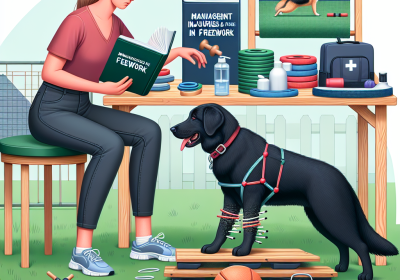Canine Freework and Physical Exercise
Table of Contents
- Benefits Of Canine Freework For Your Dog’s Mental Health
- How Canine Freework Enhances Your Dog’s Physical And Emotional Well-being
Canine Freework and Physical Exercise are essential components of a dog’s overall well-being, contributing significantly to their physical health, mental stimulation, and behavioral balance. Canine Freework involves a variety of activities that allow dogs to explore their environment, engage their senses, and use their natural instincts in a controlled and safe manner. This type of activity can include scent work, problem-solving tasks, and interactive play, all designed to stimulate a dog’s mind and provide a sense of purpose and fulfillment. Physical Exercise, on the other hand, encompasses activities that promote cardiovascular health, muscle strength, and flexibility. Regular physical exercise can include walking, running, agility training, and play sessions, all of which help to maintain a dog’s physical fitness, prevent obesity, and reduce the risk of various health issues. Together, Canine Freework and Physical Exercise form a holistic approach to dog care, ensuring that dogs lead happy, healthy, and enriched lives.
Integrating Physical Exercise With Canine Freework For Optimal Fitness
Integrating physical exercise with canine freework for optimal fitness is a multifaceted approach that not only enhances a dog’s physical health but also addresses mental challenges. Canine freework, a concept that encourages dogs to explore their environment freely, is instrumental in promoting mental stimulation and reducing stress. When combined with structured physical exercise, it creates a holistic regimen that benefits both the body and mind of the dog.
To begin with, physical exercise is essential for maintaining a dog’s overall health. Regular activities such as walking, running, and playing fetch help to build muscle strength, improve cardiovascular health, and maintain a healthy weight. However, physical exercise alone may not be sufficient to address the mental needs of a dog. This is where canine freework comes into play. By allowing dogs to engage in freework, they are given the opportunity to use their senses, make decisions, and solve problems, which are crucial for mental well-being.
The integration of physical exercise with canine freework can be achieved through various methods. One effective approach is to incorporate freework elements into daily exercise routines. For instance, during a walk, owners can allow their dogs to explore different terrains, sniff around, and investigate new objects. This not only provides physical activity but also engages the dog’s mind, making the walk more enriching and fulfilling. Additionally, incorporating agility exercises, such as navigating through obstacle courses, can combine physical exertion with mental challenges, further enhancing the dog’s overall fitness.
Moreover, the use of interactive toys and puzzles during playtime can serve as an excellent way to integrate physical and mental exercise. Toys that dispense treats or require the dog to manipulate them in specific ways can keep the dog physically active while also stimulating their cognitive abilities. This dual engagement helps to prevent boredom and reduces the likelihood of behavioral issues that may arise from a lack of mental stimulation.
Furthermore, it is important to consider the individual needs and preferences of each dog when designing an integrated exercise and freework regimen. Some dogs may thrive on high-intensity activities, while others may prefer more gentle and exploratory exercises. Understanding the unique characteristics of the dog can help in tailoring a program that maximizes both physical and mental benefits. For example, a high-energy breed may benefit from a combination of long runs and complex agility courses, whereas a more laid-back breed might enjoy leisurely walks with ample opportunities for sniffing and exploring.
In addition to the physical and mental benefits, integrating exercise with freework can also strengthen the bond between the dog and the owner. Engaging in activities together fosters trust and communication, which are essential components of a healthy and happy relationship. Owners can use these opportunities to observe their dog’s behavior, understand their preferences, and respond to their needs, thereby enhancing the overall quality of life for both the dog and the owner.
In conclusion, the integration of physical exercise with canine freework is a comprehensive approach that addresses both the physical and mental challenges faced by dogs. By combining structured physical activities with opportunities for exploration and problem-solving, owners can create a balanced regimen that promotes optimal fitness and well-being. This holistic approach not only benefits the dog’s health but also strengthens the bond between the dog and the owner, leading to a more fulfilling and harmonious relationship.
Understanding The Physical Benefits Of Canine Freework

Canine freework, an innovative approach to dog training and exercise, has garnered significant attention for its multifaceted benefits. This method, which emphasizes allowing dogs to explore and engage with their environment freely, offers a plethora of physical advantages that contribute to the overall well-being of our canine companions. Understanding these physical benefits requires a closer examination of how freework impacts a dog’s body and health.
To begin with, canine freework promotes enhanced muscle development and strength. Unlike structured exercises that often focus on repetitive movements, freework encourages dogs to navigate various terrains and obstacles. This variety in movement engages different muscle groups, leading to a more balanced and comprehensive workout. For instance, when a dog climbs over logs, crawls under benches, or balances on uneven surfaces, it activates muscles that might otherwise remain underutilized. Consequently, this leads to improved muscle tone and strength, which are crucial for maintaining a dog’s physical health and preventing injuries.
In addition to muscle development, freework significantly enhances a dog’s cardiovascular health. The unpredictable nature of freework activities ensures that dogs are constantly moving, which elevates their heart rate and promotes cardiovascular endurance. Regular engagement in such activities can lead to a stronger heart, improved circulation, and better overall stamina. This is particularly beneficial for breeds that are prone to heart conditions, as it provides a natural way to keep their cardiovascular system in optimal condition.
Moreover, the physical demands of canine freework contribute to better joint health and flexibility. The diverse range of movements involved in freework, such as jumping, twisting, and turning, helps to keep joints lubricated and flexible. This is especially important for older dogs or those with predispositions to joint issues like arthritis. By maintaining joint flexibility and strength, freework can help mitigate the onset of joint-related problems and improve the quality of life for aging dogs.
Another significant benefit of canine freework is weight management. Obesity is a common issue among domestic dogs, leading to a host of health problems such as diabetes, heart disease, and decreased lifespan. Freework provides an engaging and enjoyable way for dogs to burn calories and maintain a healthy weight. The varied and stimulating nature of freework activities ensures that dogs remain interested and motivated, making it easier for owners to incorporate regular exercise into their pets’ routines.
Furthermore, the physical benefits of canine freework extend to improved coordination and balance. Navigating through different obstacles and terrains requires dogs to develop a keen sense of body awareness. This not only enhances their physical coordination but also boosts their confidence in their abilities. Improved balance and coordination are essential for preventing accidents and injuries, particularly in active or working dogs.
In conclusion, the physical demands of canine freework offer a comprehensive range of benefits that contribute to the overall health and well-being of dogs. From enhanced muscle development and cardiovascular health to better joint flexibility and weight management, freework provides a holistic approach to canine fitness. By allowing dogs to engage in natural, varied movements, freework not only keeps them physically fit but also enriches their lives, making it an invaluable practice for dog owners and trainers alike.
How Canine Freework Enhances Your Dog’s Physical And Emotional Well-being
Canine Freework, a relatively new concept in the realm of dog training and care, is gaining traction for its multifaceted benefits to a dog’s physical and emotional well-being. This innovative approach involves allowing dogs to engage in natural behaviors in a controlled environment, thereby promoting both physical exercise and mental stimulation. By understanding the principles and advantages of Canine Freework, dog owners can significantly enhance their pets’ quality of life.
To begin with, Canine Freework emphasizes the importance of allowing dogs to explore their surroundings freely. This exploration is not merely a physical activity but also a mental exercise that engages a dog’s senses and cognitive abilities. When dogs are given the opportunity to sniff, investigate, and interact with various objects and environments, they experience a form of mental enrichment that is crucial for their overall well-being. This mental stimulation can help reduce anxiety and stress, leading to a calmer and more balanced demeanor.
Moreover, the physical aspect of Canine Freework cannot be overlooked. Traditional forms of exercise, such as walking or running, are undoubtedly beneficial, but they often lack the variety and engagement that Canine Freework provides. By incorporating different textures, surfaces, and obstacles into a dog’s environment, owners can create a more dynamic and challenging experience. This not only helps to build muscle strength and improve coordination but also keeps the dog engaged and motivated. Consequently, dogs are less likely to become bored or develop destructive behaviors, which are often a result of insufficient physical and mental stimulation.
In addition to the physical and mental benefits, Canine Freework also fosters a stronger bond between the dog and its owner. When owners actively participate in their dog’s exploration and play, they create a shared experience that enhances trust and communication. This collaborative approach can lead to a deeper understanding of the dog’s needs and preferences, allowing for more effective training and care. Furthermore, the positive reinforcement that often accompanies Canine Freework activities can boost a dog’s confidence and sense of security, contributing to a more harmonious relationship.
Transitioning from traditional exercise routines to Canine Freework may require some adjustments, but the rewards are well worth the effort. For instance, owners can start by introducing simple elements such as different types of surfaces or objects for the dog to explore. Gradually, more complex setups can be created, incorporating elements like tunnels, balance beams, and scent trails. The key is to observe the dog’s reactions and adjust the environment accordingly, ensuring that the activities remain enjoyable and stimulating.
It is also important to note that Canine Freework is not a one-size-fits-all solution. Each dog is unique, with its own set of physical capabilities and emotional needs. Therefore, owners should tailor the activities to suit their individual dog’s requirements, taking into consideration factors such as age, breed, and health status. Consulting with a professional trainer or veterinarian can provide valuable insights and guidance in this regard.
In conclusion, Canine Freework offers a holistic approach to enhancing a dog’s physical and emotional well-being. By promoting natural behaviors and providing varied and engaging activities, this method addresses both the physical and mental needs of dogs. The result is a happier, healthier, and more well-adjusted pet, as well as a stronger bond between the dog and its owner. As more dog owners embrace the principles of Canine Freework, the potential for improved canine welfare becomes increasingly evident.
Read more about Canine Freework
Canine Freework and Physical Exercise
– The Physical Demands of Canine Freework
– Canine Freework as a Form of Exercise for Dogs
– How to Safely Increase Physical Demands in Canine Freework
– Combining Canine Freework with Other Forms of Exercise
– Managing Injuries and Fatigue in Canine Freework






![The Dog Podcast Uncovers Startling Truths About What We Feed Our Dogs [Press Release]](https://narrativenest.com.au/wp-content/uploads/2024/08/canine-nutritious-food-400x280.jpg)


![The Dog Podcast Uncovers Startling Truths About What We Feed Our Dogs [Press Release] The Dog Podcast Uncovers Startling Truths About What We Feed Our Dogs [Press Release]](https://narrativenest.com.au/wp-content/uploads/2024/08/canine-nutritious-food-75x60.jpg)